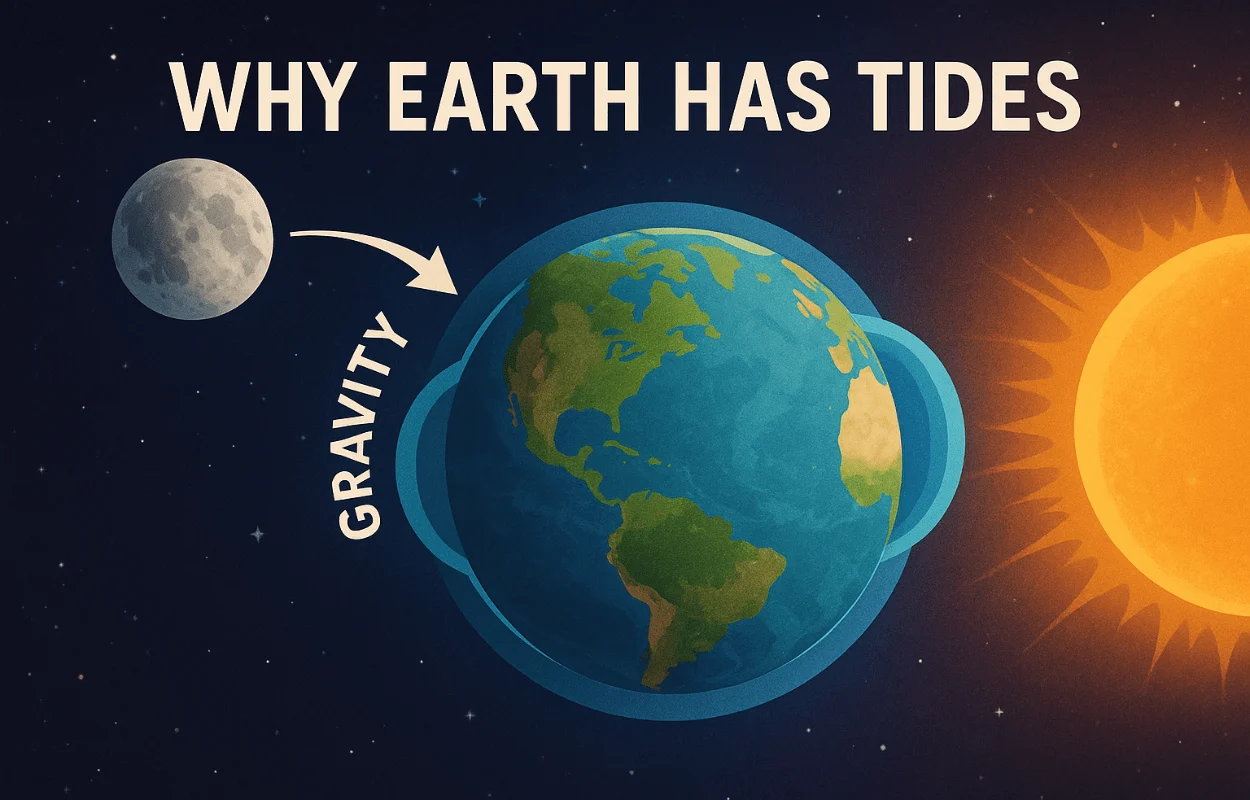Why Does Earth Have Tides?
What Are Tides?
Tides are the regular rise and fall of sea levels that happen every day all around the world. If you've ever been to a beach and noticed the water getting closer or moving farther away from shore during the day — that’s because of tides. These movements happen mainly because of the gravitational pull of the Moon and the Sun on Earth’s oceans.
But tides are more than just waves — they are massive movements of water across the globe, creating predictable changes in ocean height that affect coastlines, marine life, human activities, and even energy systems.
How the Moon Creates Tides
The Moon has a strong gravitational pull on Earth. As it orbits around us, it pulls the oceans toward it. This creates a “bulge” of ocean water on the side of Earth facing the Moon — this is a high tide. But here's the interesting part: there’s also another high tide on the exact opposite side of the Earth!
This second bulge happens because Earth itself is being pulled slightly toward the Moon more than the water on the far side — so the water there lags behind, creating another high tide. Between these bulges, the ocean level is lower — that's where low tides occur.
Earth’s Rotation and the Daily Tidal Cycle
Earth rotates once every 24 hours, and because of the two tidal bulges, most coastal areas experience two high tides and two low tides each day. The timing of tides changes slightly each day — about 50 minutes later — because the Moon is also orbiting Earth while Earth is spinning.
This cycle of rising and falling water is very regular and can be predicted years in advance using mathematical models.

What Are Spring and Neap Tides?
The Sun also has gravity, and although it's much farther away than the Moon, it still affects Earth's tides. When the Sun, Moon, and Earth line up during a new moon or full moon, their combined gravity creates the highest and lowest tides — these are called spring tides (not related to the spring season).
When the Moon is at a right angle to the Sun (during its first and third quarter phases), their gravitational pulls work against each other. This causes smaller tidal changes called neap tides. Neap tides have less difference between high and low water levels.
Why Are Tides Important?
Tides are essential to life on Earth. They help:
- Circulate nutrients and oxygen in coastal ecosystems, supporting marine life
- Influence fishing and migration of fish and other sea animals
- Assist in navigation and harbor operations by changing water depth
- Shape coastlines by moving sand and sediments
- Generate renewable energy through tidal power plants
Understanding tides helps people plan ship movements, fishing schedules, construction near coasts, and even beach outings!
Does the Sun Cause Tides Too?
Yes, but to a lesser degree. The Sun’s gravitational pull on Earth is about 46% as strong as the Moon's when it comes to affecting tides. So, while the Moon is the primary force behind tides, the Sun either increases or decreases their effect depending on its position.
The most dramatic tides happen when the Moon and Sun work together — during full and new moons.
Fun Fact!
The longest tidal range in the world occurs in the Bay of Fundy, located between Canada’s Nova Scotia and New Brunswick provinces. The water level there can change by up to 16 meters (over 50 feet) between low tide and high tide!
You might also like

What is Gravity?

Exploring the Night Sky Using a Planisphere
